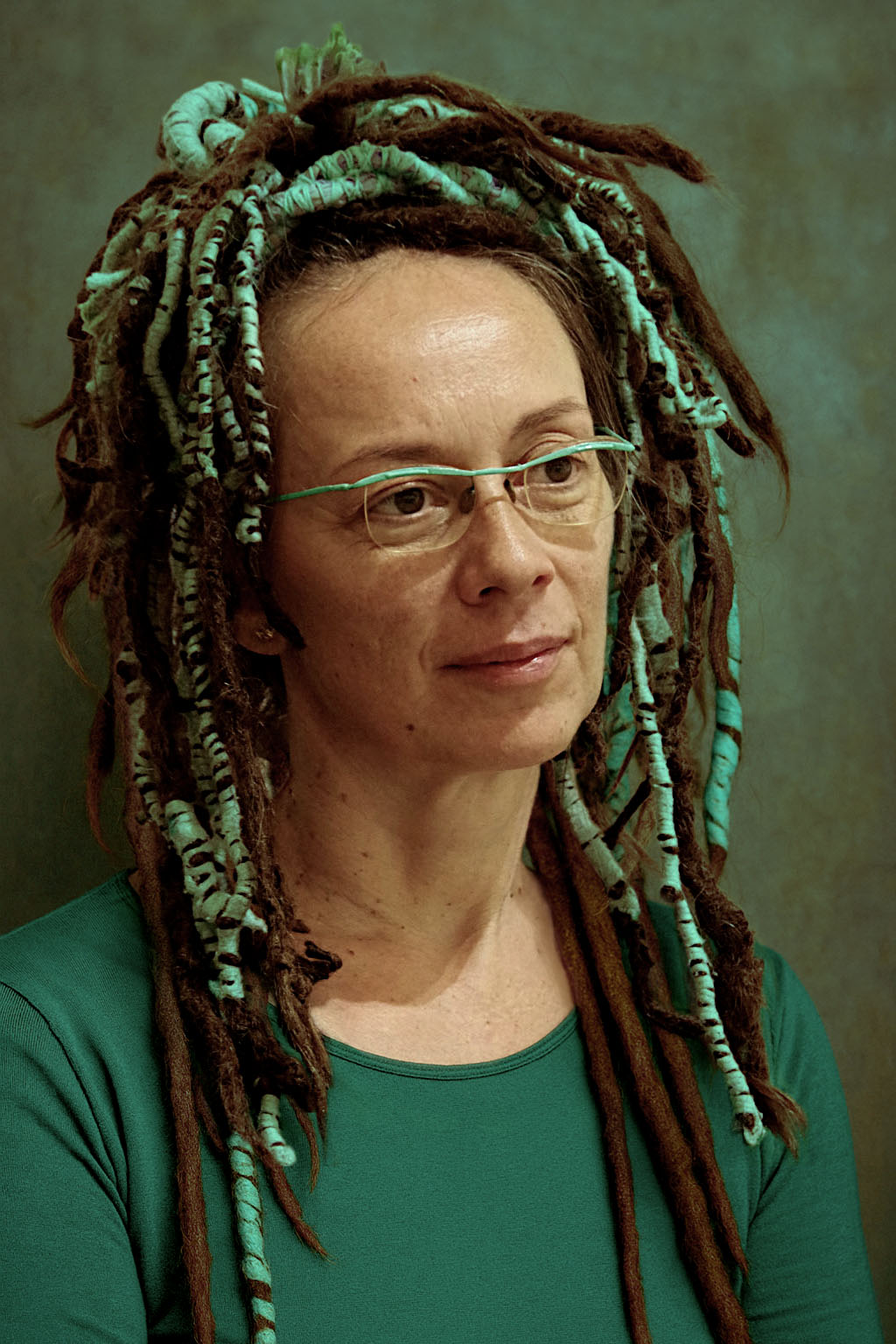Barbara Bónyai (born 1975 in Budapest, Hungary) is a Hungarian sculptor and multimedia artist based in Budakeszi, Hungary. She holds a higher education degree in Sculpture from the Hungarian University of Fine Arts, where she studied under the renowned sculptor György Jovánovics. Bónyai’s artistic practice spans various mediums, including sculpture, painting, installation, video and performance art, with a particular focus on interdisciplinary approaches. She is best known for her conceptual and interactive installations, blending elements of digital media, sculpture, and performance.
Bónyai’s work explores themes of identity, alienation, and social paradoxes, often employing upcycling and material experimentation. Her art focuses on the intersection of traditional and digital media, and she often creates site-specific installations and performances. Among her most significant works are Contemplatio 2001, a conceptual and interactive installation, and Value-enhancing Upcycling (2016), a performance-installation that reflects her interest in sustainability, the transformation of everyday materials, and marginal subcultures. Her series of artworks and performances, such as Tao-ship (1997) and Temple (1996), further showcase her unique approach to blending visual art with performance. Her work often resists categorization, instead inviting viewers into a layered and immersive experience that challenges conventional boundaries.
Barbara Bónyai has participated in numerous solo and group exhibitions both in Hungary and internationally. Her solo exhibitions include PANSEXCEXCOXBOX (2002) at the Kirakat Gallery and Rite (2016) at the Vörösmarty Theatre. She has also participated in numerous group exhibitions, including Circus Flow in Visegrád (2021) and the Gadjos and Chavos at Artus Studio in Budapest (2010). Bónyai’s works are featured in various collections, and she has made a significant contribution to the Hungarian contemporary art scene with her innovative approach to art-making and performance.
In the early 2000s, Barbara Bónyai deliberately chose a path of inner emigration as a form of artistic resistance. Influenced by the critical aesthetics of Adorno and Bourdieu, as well as by early Hungarian voices in institutional critique, she withdrew from the increasingly market-driven, representation-focused art scene. This strategic withdrawal was not an escape, but a necessity rooted in her pursuit of artistic autonomy and integrity.
Over the years, however, a growing desire emerged to reconnect—with an engaged, receptive audience, and to re-enter the field not through compromise but through meaningful address. Her recent return to visibility is shaped by this dual impulse: to remain true to her artistic values while opening a space for dialogue and shared reflection.
Although the artist’s name is presented here and in official documents in Western name order (Barbara Bónyai), all artwork descriptions consistently use the traditional Hungarian name order (Bónyai Barbara) to reflect the artist’s cultural identity and authorship conventions.
